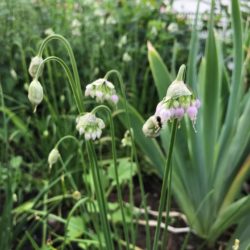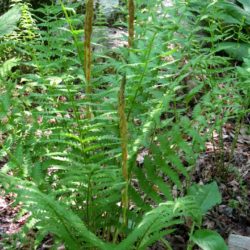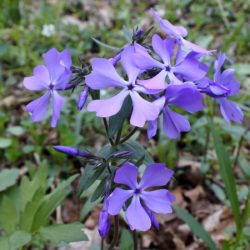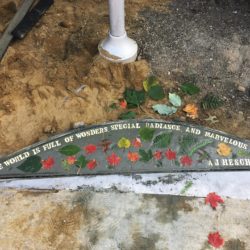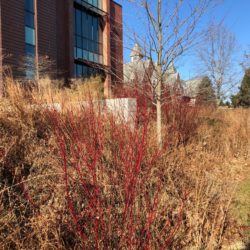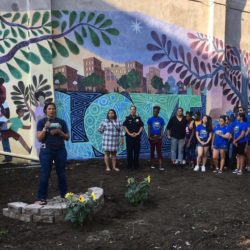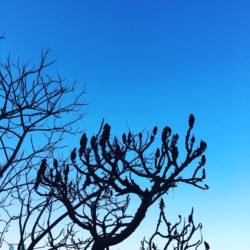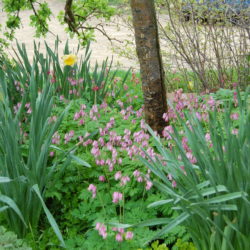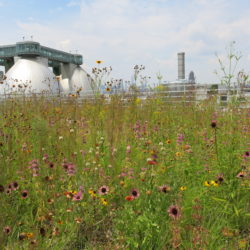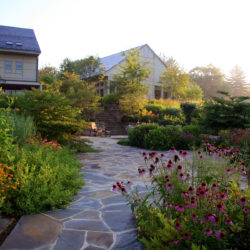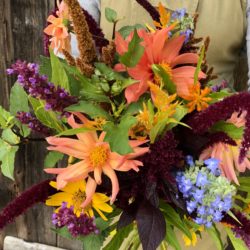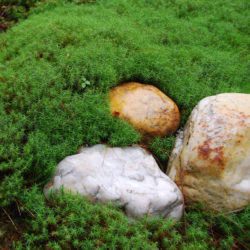Surrounded by uncertainty, more people are thinking about how their landscapes can provide food. Lawns are yielding to vegetable gardens, and suppliers of chicks have struggled to keep up with demand. For those who don’t want to take on the responsibility of a new garden or chickens, we asked a couple of ELA members to share how they introduce edible plants into the landscape.
Landscape Design
Add Mystery with Ferns
by Leslie Duthie
Long the subject of fantasy and lore, ferns were objects of desire well into the 1800s. Today, gardeners are unsure of both the ecological value of these ancient plants and how to incorporate them in the landscape. Tolerant and adaptable, ferns offer both ecological and design value.
Designing for a Shady, Dry Yard
I live in Zone 6 just outside of Boston, MA. Our tiny front yard faces north and is mostly shaded by the three-story house. To make matters worse, there is a Norway Maple on the other side of the sidewalk, so the yard is dry. The turf grass currently planted cannot cope, and there are many bare patches, even with regular overseeding. I tried Pennsylvania sedge as an experiment, and that seems to be doing well, but I don’t think I want the whole yard planted with sedge. What native plants could we use against the foundation that don’t get too high and perhaps could replace the turf? The yard is too small (21’ X 10’) for a tree or large shrubs.
Nature Play at Home – Arranging Spaces
by Nancy Striniste
Spaces speak, especially to children. Just as the soaring ceiling of a cathedral inspires a sense of awe or a candlelit restaurant prompts us to lower our voices, the formality, informality, size, or openness of a space can tell us how to behave. As we create spaces for nature play, it is our responsibility to be mindful and intentional about the messages the space will transmit to children.
Personal Reflections on Five Years of Discovery: The New Academic Center at St. George’s School
by Lori Silvia
Developed and tended as a labor of love over five years, the landscape surrounding the Academic Center at Rhode Island’s St. George’s School provided the author with new lessons day after day. From the early years as the landscape’s parent, overseeing every aspect of the of evolving landscape, the author’s role has shifted to partner as nature has taken the lead.
An Urban Oasis Designed with Community in Mind
by Jennifer Kimball
At the end of a block of brick row houses in the Dorchester neighborhood of Boston sit four abandoned lots overgrown with shoulder high weeds. Six raised garden beds speak to the desire of area residents to reclaim this space and to build a community garden in their neighborhood. Those lots are now poised to become a new public green space that will provide residents of all ages a place to gather, attend public performances, enjoy nature, and grow their own food.
Deciduous Plantings for Winter Interest
Contributors: Andi Pettis, Sarah Saltino, Chris Sawicki
After autumn winds strip foliage from deciduous plantings, new colors, shapes, and textures gain prominence in the landscape as berries, bark, and seed heads gain visibility. We invited a few ELA members to comment on plants they especially appreciate in the winter.
Eco-Answers from the Pros: Designing Complementary Sun and Shade Gardens
I can’t figure out how to have a shade bed complement the sun bed directly across from it – it’s not that things have to be matchy-matchy, but the brickwork makes them a symmetrical pair of beds. I am having trouble finding shade plants that I can combine into an ecological design, except low groundcovers and short woodland plants, and I am having a hard time visualizing what would work right across the bed of climbing roses, lambs ears, baptisa, gaura, japanese anemones, euphorbia, and salvia. ANY suggestions would be so, so appreciated. I am completely stumped!
Urban Landscape Inspirations from Native Plant Communities
by Ethan Dropkin
Many designers and horticulturists have the unique and challenging task of greening our cities where growing conditions are less than favorable. Too often they resort to using a limited palette of largely exotic species, but by looking to native plant communities, they can develop landscapes that thrive in and contribute to the urban environment.
Ten Elements of Natural Design
by Larry Weaner
The elements that make a landscape design “natural” are difficult to define. A landscape with curved bed lines, informal plant arrangements, and no pyramidal yews does not always qualify as a natural landscape. And advocates of natural design are not necessarily eager to banish a host of beautiful exotics from the plant palettes of American landscape designers, replacing the plants with a motely crew of straggly natives. The basic concept behind natural design, however, is fairly simple – to incorporate native plant communities into the designed landscape. But their successful incorporation requires a basic understanding of how native plants operate in nature.
On Revitalizing Garden Culture Through Experience Design
by Meg Herndon and Sandra Nam Cioffi
Since post-industrial urbanization drew people off the land, we’ve lost a personal connection with farms and with the natural world. Those of us with experience need to connect new generations of gardeners with their landscapes in ways that recognize the challenges of modern life.
MOSS: Providing Year-round Green Solutions for Erosion Control
by Annie (Mossin’ Annie) Martin
Mosses are far more than an appealing green ground cover; these verdant miniature plants can provide solutions for challenging erosion issues in today’s landscapes. In this case study, moss species, intentionally planted, are the entire stormwater solution.

